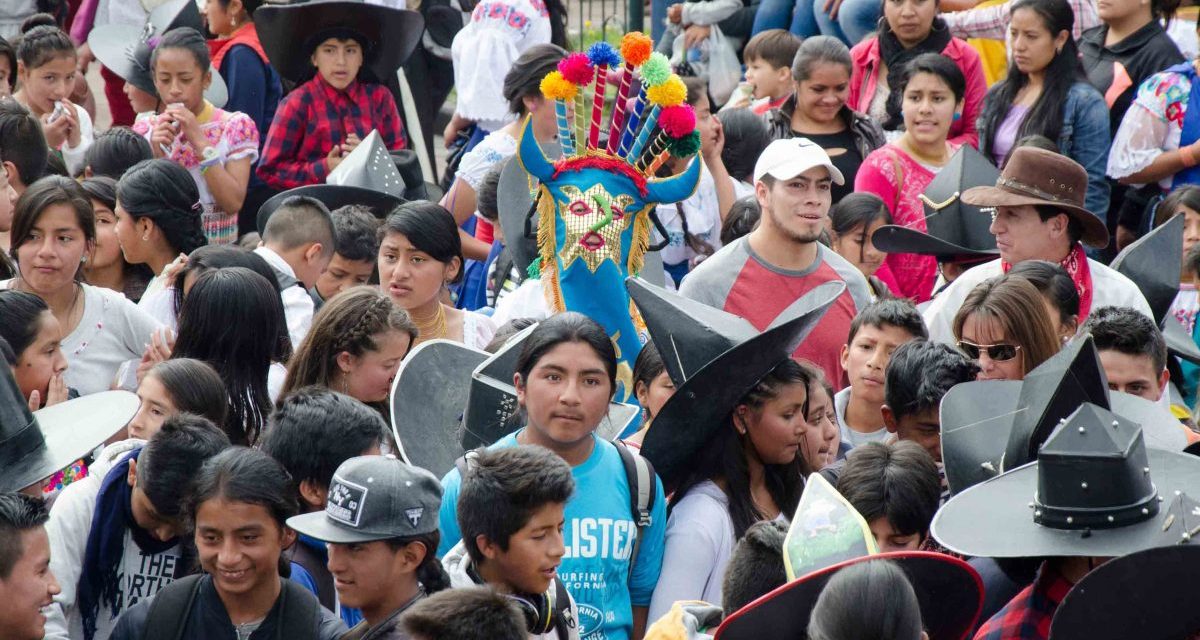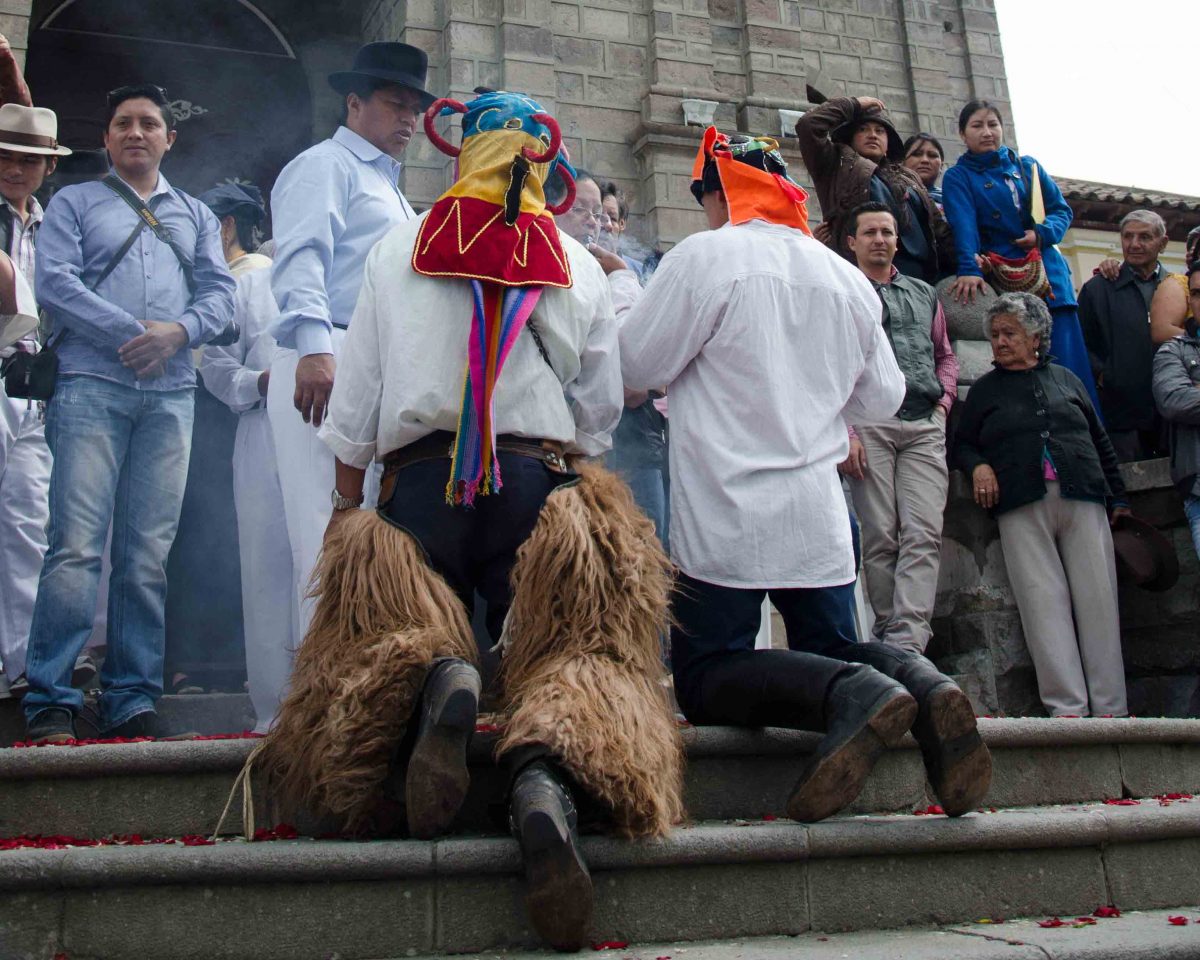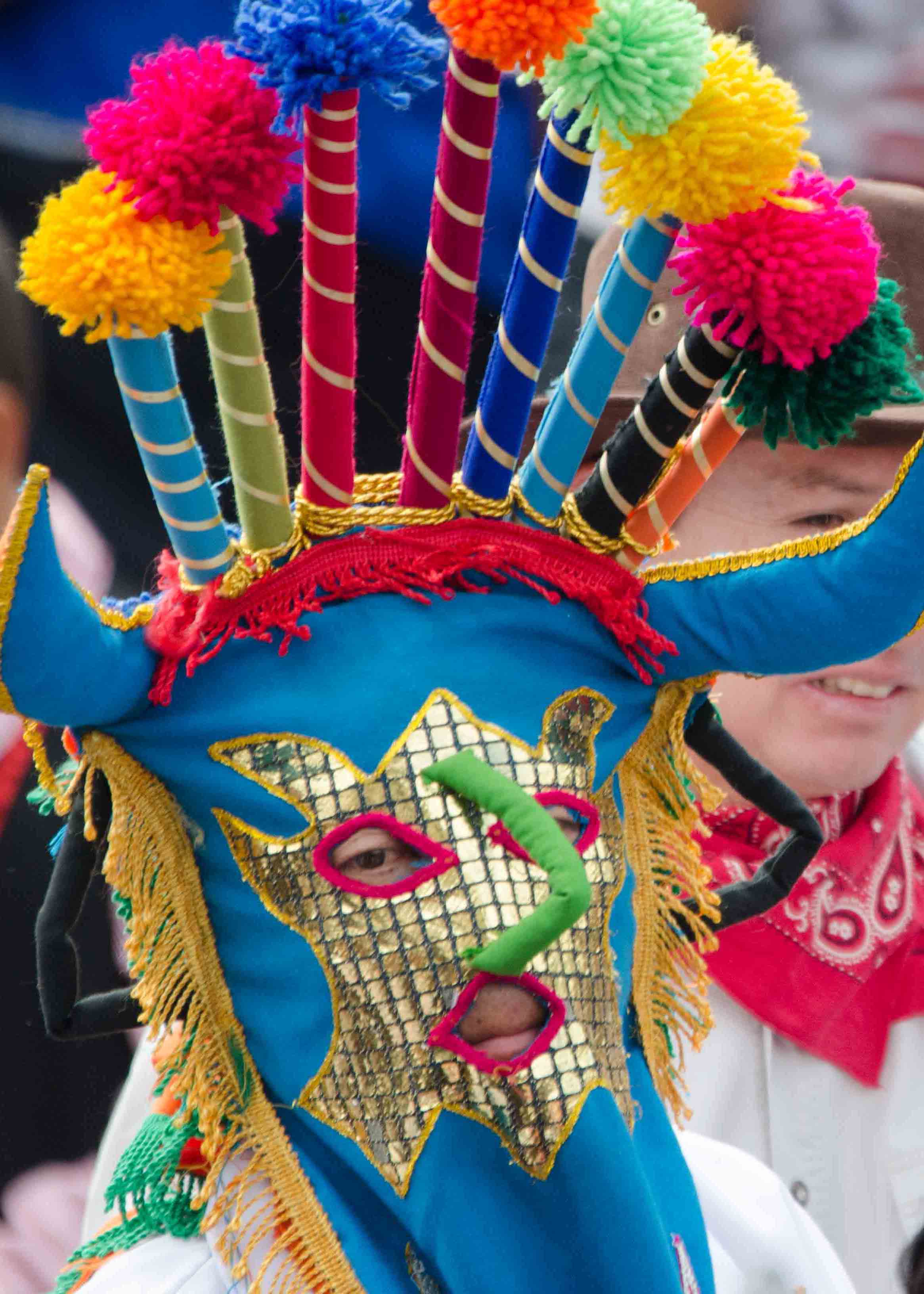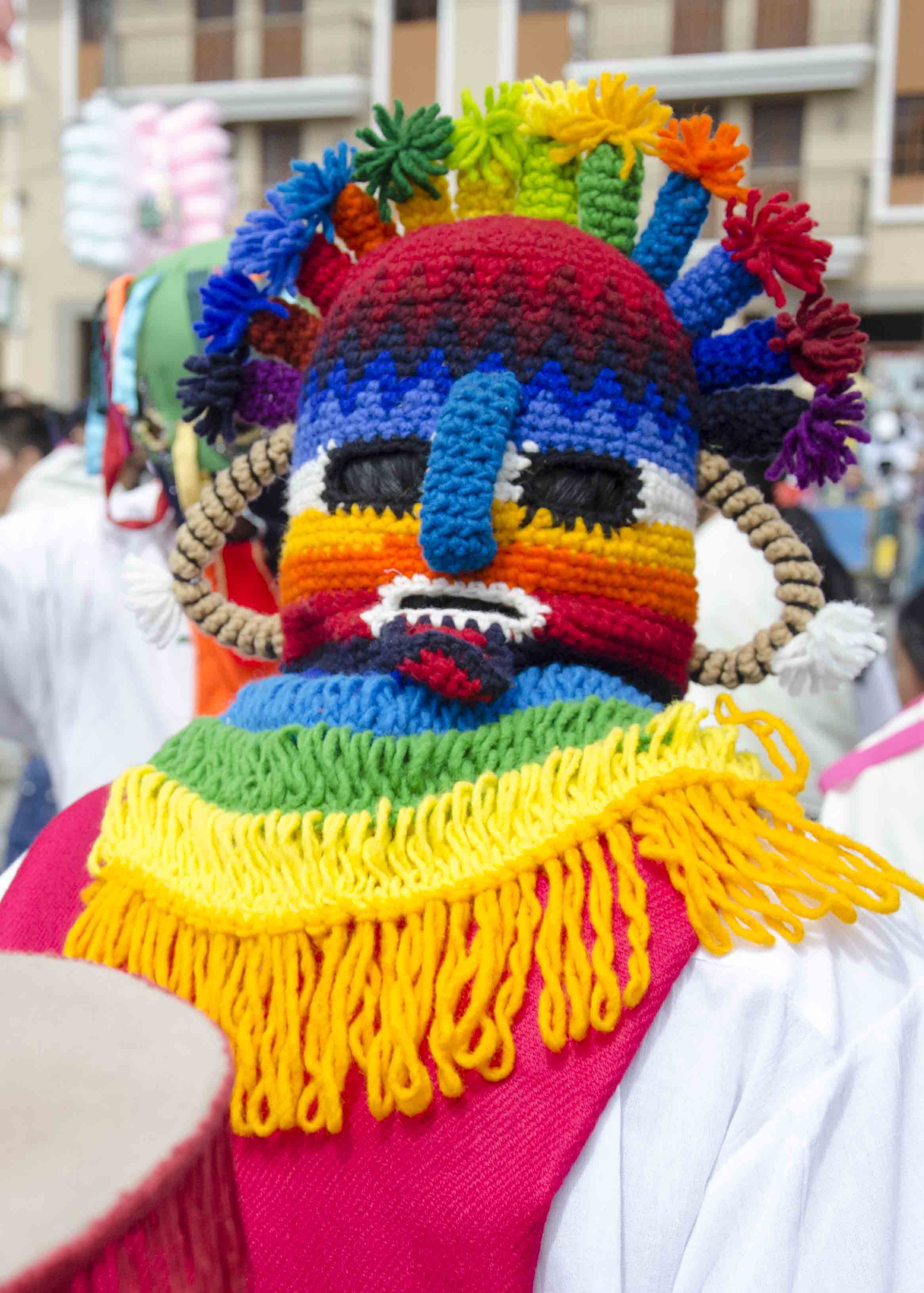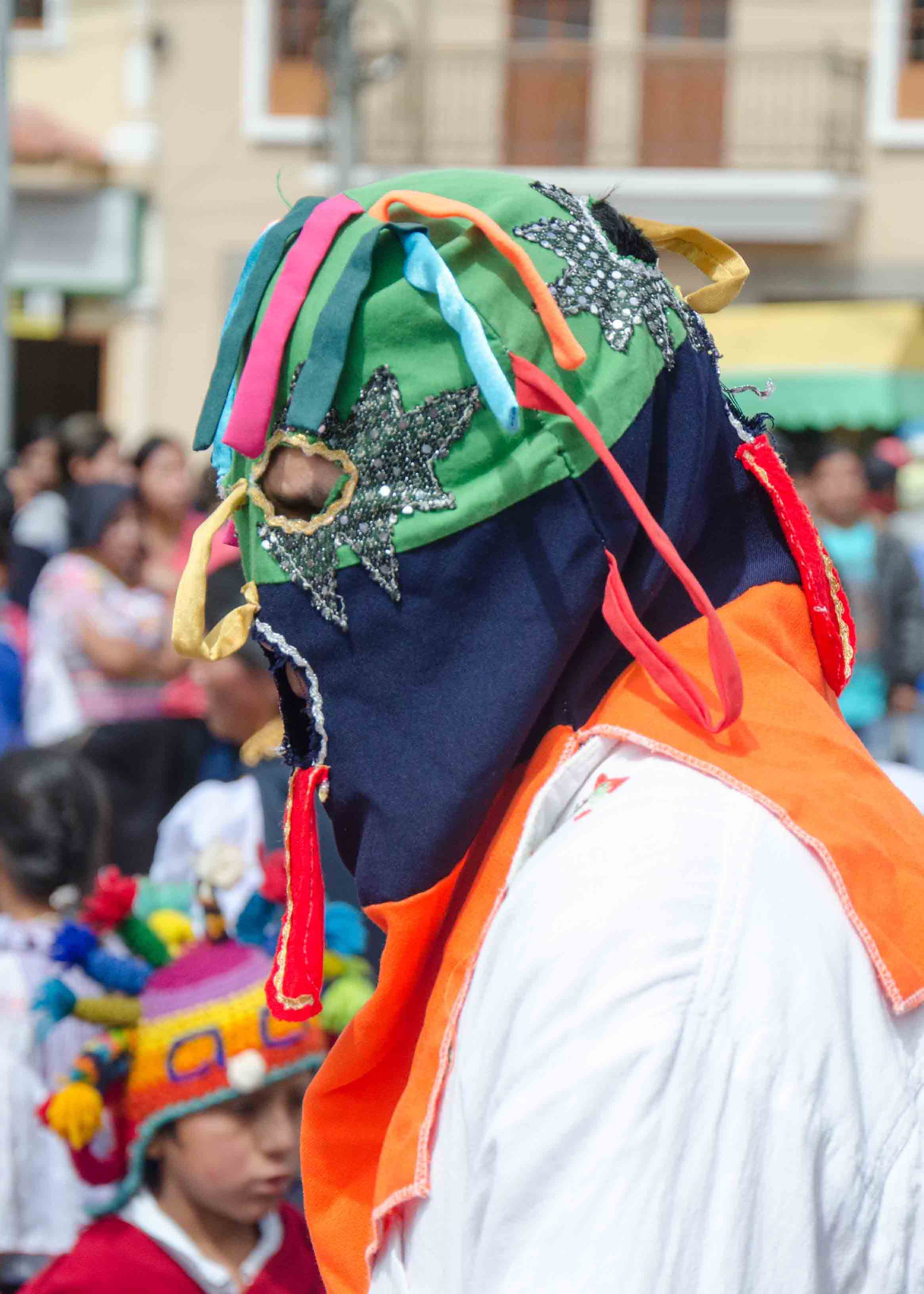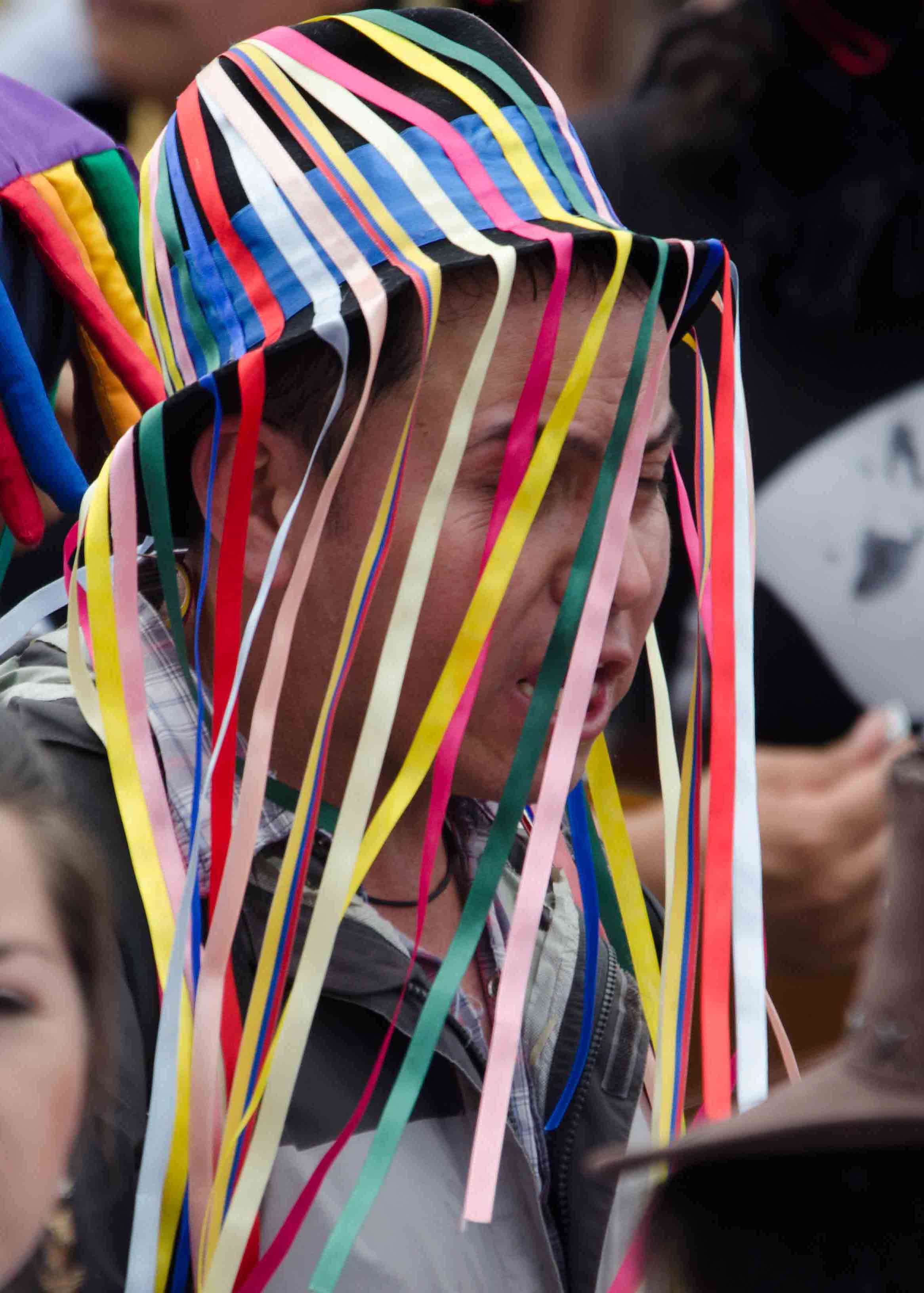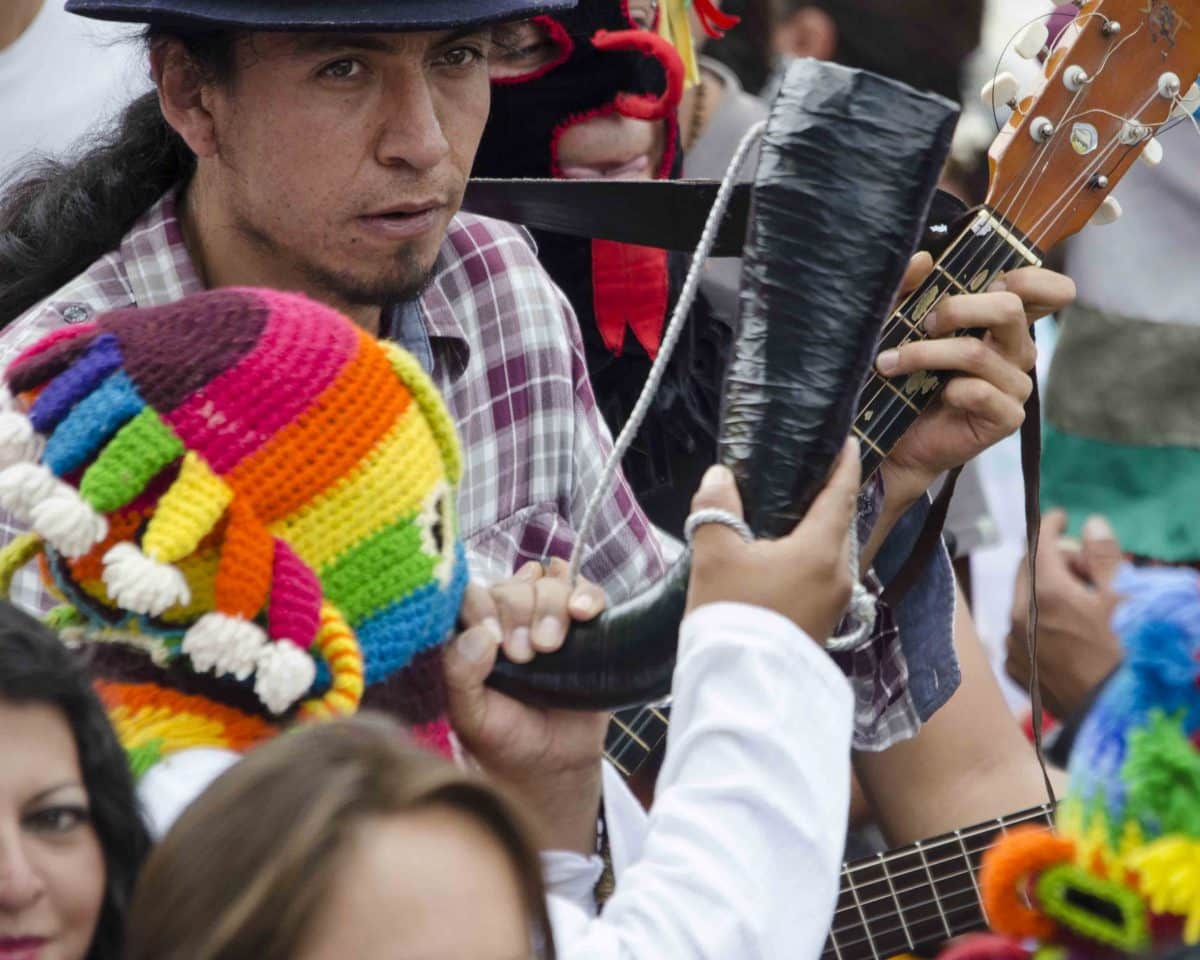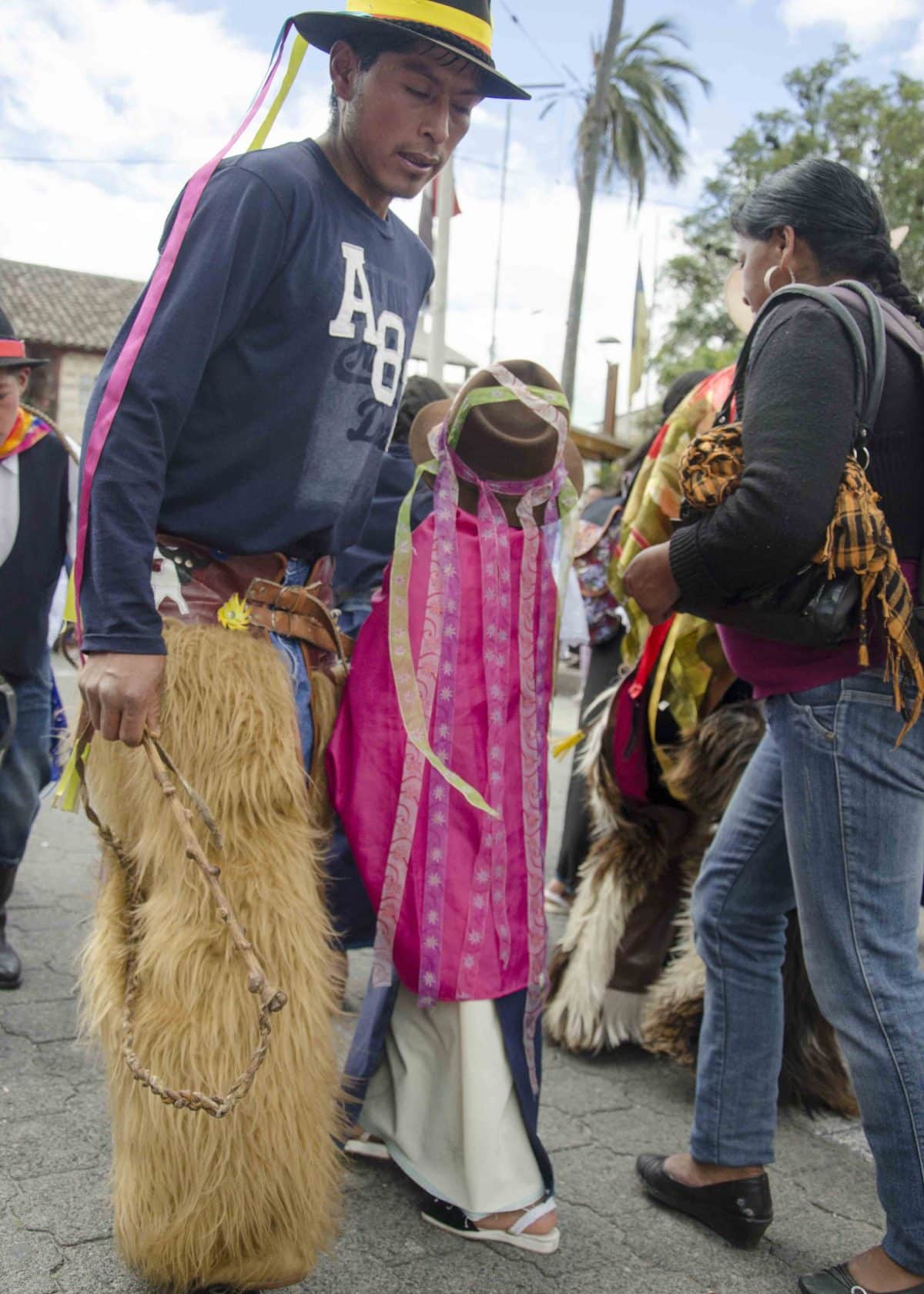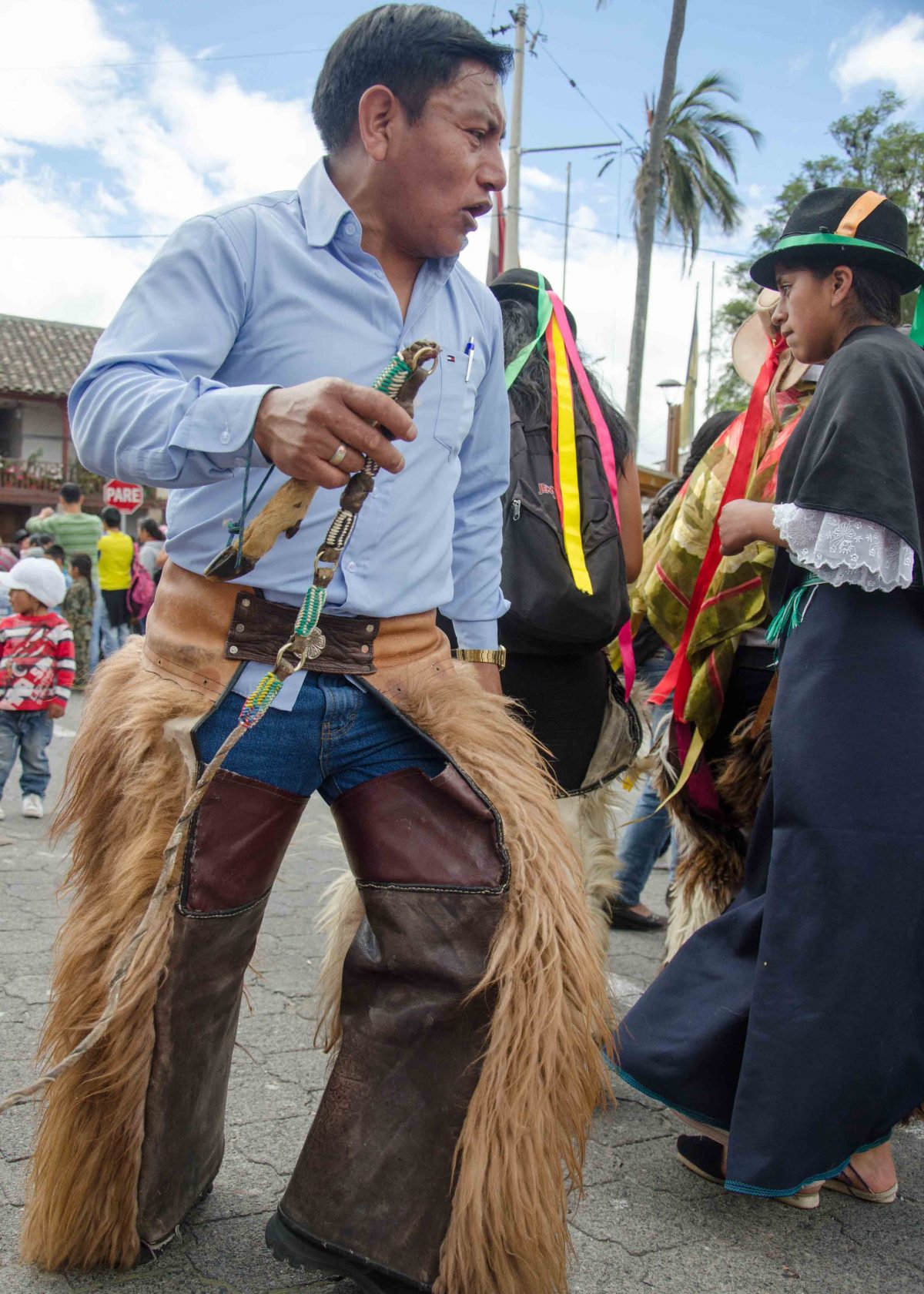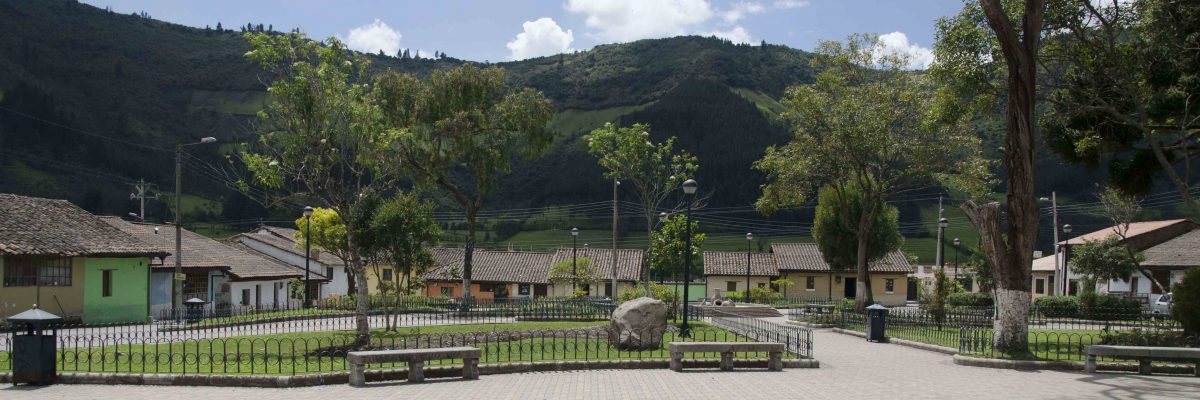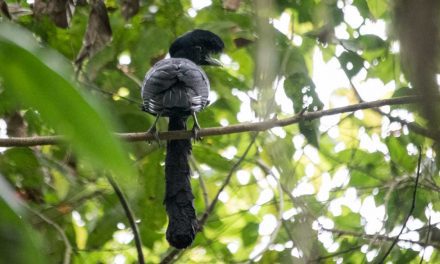First published on June 14, 2017 • Last updated on December 5, 2025
This page may contain affiliate links; if you purchase through them,
we may receive a small commission at no extra cost to you.
For people living along the equator, Inti Raymi is the day that shadows disappear even while standing in the full sun; in North America, we call it the Summer Solstice and celebrate it as the longest day of the year. But for South Americans living along the Equator, the summer solstice is a day to thank the Pachamama or Madre Tierra, to celebrate the circular nature of life in the Andes where the sowing of fields or the harvesting of crops can take place year round rather than in a single season.
Archeology ruins around the Ecuadorian Sierra, like Cochasquí, Rumicucho, and Ingapirca, make it clear that even before the arrival of the Inca, native tribes had an understanding of astronomy and could track the passage of both the sun and the moon. Ancient indigenous tribes likely celebrated the two solstices and the two equinoxes. A form of those celebrations still take place today, in large part because of increased interest in preserving the traditions of pre-colonial Ecuador.
While June 21st is the actual date of the summer solstice, celebrations for Inti Raymi can take place in the weeks leading up to and following that single day. It is a time for purification and for blessings, for washing in sacred waters, for preparing meals of traditional foods, and for sharing these events with your family and community.
Catholic Feast Days
Often Sierran communities use this time to integrate celebrations of the Catholic Feast Days of Saint John the Baptist on June 24th and Saint Peter on June 29th. These celebrations are often a blend of indigenous culture and Catholic tradition. These are not national holidays in Ecuador so people are still required to work. If any of these days, the 21st, the 24th, or the 29th, fall on a weekend, celebrations are bound to be larger than usual because the sons and daughters who have moved to the big city return home, much like we do in the United States for Thanksgiving Weekend.
If you are planning on attending festivities in a Sierran community, I recommend checking the local calendar first. My tip is to use a good search engine, like Google, and use the terms agenda (schedule of events), Inti Raymi, and the name of the town or region you will be visiting. Make sure to limit your search to the last few months so that you don’t pull up dates from past years. They will not be a good guide to what is actually going to happen this year. And be prepared to translate Spanish.
The Faces of Inti Raymi
At most of these events, you should expect to see processions, parades, and large gatherings that will include some, if not all, of these characters:
Aya Huma
The role of Aya Huma is to rid the festival of bad demons. This character is always a man. He wears a mask of double faces. The mask is pulled on over the top of the head so that there is a full face in front and second full face in back. Traditional masks are made of soft fabrics and are a patch-work of bright colors. A modern version, knitted from rainbow-colored strands of wool, can be bought by tourists at markets in Quito and Otavalo and is actually used in many modern-day events. The bright colors symbolize the rainbow, a sacred image and a modern day symbol of the Andean Nations. All versions have elongated spokes coming from the top of the head. They symbolize serpents, a sign of wisdom.
Los Aruchicos
These figures wear hats hanging with multi-colored ribbons and don brightly colored shawls. Sometimes instead of a hat with ribbons, they will wear wire-meshed masks. They often play the guitar. They represent a good kind of sorcery and their role is to drive away evil spirits.
Los Takik
These players are musicians who bring harmony to the festival. They also help create order with their music. Their costumes can be varied but they will often wear woolen ponchos and play traditional instruments like el churo (a conch shell) las flautas (an Andean pan flute), el rondín (a harmonica), and el bandolín (a 15-stringed instrument similar to a guitar) and more modern versions of horns, accordians, and guitars. Music is important in all Andean festivals and musicians are treated with great respect.
Los Tushuk
These are dancers who move in circles, representing the movement of the sun through the sky or in S-curves in the imitation of a snake, a symbol of wisdom. The dancing is really more like marching. It is called el zapateado and is type of foot stomping that matches the beat of the music played by Los Takik. The rhythm of the dance is unique to each community. Male dancers often wear zamarros, chaps made from goat or llama hide. When women dance, they wear traditional skirts, embroidered blouses, and woolen hats.
You might note that many of the photos show men. These festivals were traditionally male celebrations and, according to Ariruma Kowii of the University of Andina Simon Bolivar in Quito, have only included women in recent decades. My experience with the Inti Raymi festivals in Cotacachi last year confirms that while women are not prevented from participating, their roles are still somewhat limited.
Attending a Local Festival
If you decide to attend an Inti Raymi festival, be aware of the flavor of event you are attending. For example, in Cotacachi, Inti Raymi festivals include the Taking of the Plaza, an iconic tradition that sometimes turns violent. Different neighborhoods of Cotacachi are assigned a time to enter the central plaza, to dance around it, and to leave after time limit has finished. Then another neighborhood is supposed to enter. In ancient times, this was an opportunity for ritual fighting and almost always included a ritual death. In fact, some locals still believe that the ancients spilled blood to fertilize the freshly tilled fields. A few years back, people did die in Cotacachi when some young men took the ritual too far. Today in Cotacachi, police in riot gear stand on street corners to prevent any fighting between rivals. Yet alcohol rules the day and fights still break out.
If you are not familiar with a region but want to attend an Inti Raymi festival, I strongly recommend talking to a trusted guide, a hotel owner, or just a local friend to get a good feel for what to expect. Or ask here in the comments and we will do our best to track down an answer for you. Many of these celebrations are beautiful to see and those where tourists are welcome will be well advertised.
Yet if you were to arrive in Cotacachi the day before, you could celebrate with locals as every school in the region takes their turn at Taking the Plaza. This event is steeped in tradition with children in local costumes, adults dressed as Aya Huma and Aruchicos while musicians and dancers keep everyone moving in step. School groups are blessed on the steps of the church and offerings of food are leaned up against the stone walls. It is a day for children to learn about their culture and to share in the celebration. There is some sharing of the fermented beverage, chicha, but not the heavy drinking that will take place the next day. This event is family friendly and highly enjoyable.
We would love to hear about your experiences with Inti Raymi in Ecuador. Share your story with us.
Sources used to write this article:
- http://www.otavalosonline.com/contenido/el-inti-raymi-de-otavalo
- http://lahora.com.ec/index.php/noticias/show/895937/-1/El_Aya_huma,_un_ser_mitol%C3%B3gico.html#.WUA0MhPyvUY
- http://www.eluniverso.com/vida-estilo/2014/08/26/nota/3549636/positivismo-algarabia-figura-aruchico
- http://www.eltelegrafo.com.ec/noticias/regional-norte/1/el-zapateo-energico-de-los-danzantes-alegra-el-inti-raymi

